Feats in Ancient Times
By Paul Comben:
Part I – Introducing the Era and Its Issues
So let us confront the stark reality: when it comes to many of the battles fought in the ancient world, no one has got very much of an idea as to what precisely happened, who exactly took part, and where all the commotion was meant to be located. This, if I think back to my earliest days in the hobby, say 1972 or 1973, presents something of a quandary – for at the very time designers and developers were looking to do more with their decently documented 19th and 20th Century fave armies and campaigns than what the previous decade had been able to offer, events in the far long ago were always going to be dauntingly uncooperative with anyone thinking of doing a game on just about anything from anywhere in that broad period.
Consider the map: if you do not know where the battlefield was, what do you put on the playing surface? Consider the armies: if you do not know the size of the respective hosts, how do you represent those same armies in units of cardboard? And if, as is often the case, apart from who won and who lost, all you have pertaining to this or that engagement is a contrived speech and a bit of intrigue in a tent, how can you possibly tell if any design’s modeling of events actually chimes with the historical permutations?
Frustrating this all certainly is, but intriguing and engaging at the same time. This two-part study will look at how board wargames have recreated the battles of antiquity, what sort of sources give the best clues as to how such designs can be pieced together, and above all else, will assess whether the games we play on such subjects really do capture the essence of how these armies behaved – well, at least as far as anyone can tell. In this context, whilst we can readily acknowledge that the peoples of two or three or four thousand years ago were just as intelligent as ourselves, and that some aspects of the human psyche have remained largely the same over the millennia, it is hard to dismiss the notion that epochs of short lifespans, superstition and ritual, totalities of power, and borders and seas effectively marking the end of the world, each caused people to think differently to ourselves in at least some respects, including in the matter of war.
This, I dare suggest, offers up a very different perspective on conflict design for ancient subjects as opposed to those with at least a smack of modernity. Not a great deal of the social history of Revolutionary France is likely to find itself in a design on Marengo or Austerlitz, but it could be argued that you cannot tackle many an ancient theme properly without building your armies and your battle out of the lives of the nations involved – after all, these might be the only references you have. As the military historian Hans Delbrück was wont to stress, national traits pertaining to social prerogatives, hierarchies, the use and status of the horse, and all such matter, are a pretty good way of assessing the size, composition and conduct of ancient armies. And of course, once you have a fair idea as to how big this or that army was, and who was actually in it, and what they were waving about, you can then start making some logical deductions about how that army is going to fight, and what sort of ground it is going to prefer.
For me, this is a big attraction about wargaming ancient battles. It goes way beyond considerations of simply having a bit of a hack and a slash around the field of Cannae; rather, it is in seeing whether what we make and what we play really does come to life as a feasible model of an army full of soldiers who are going to do most of their killing face to face, and may do so with cheer or despair depending on the colour of the sky, the sight of a bird, the pronouncements voiced over a beast’s entrails, or the glimpsing of the leader hero, king, emperor or first among equals, charging resolutely at the foe.
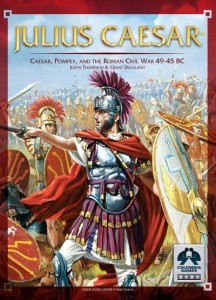 What the broader wargame community thinks about this can vary somewhat. As much as we profess to like innovation, shifts away from our gaming comfort zones are sometimes difficult to deal with. In an article that is primarily about battle simulations the example I am about to give is wandering slightly off subject, but if I do think of a game like Columbia’s Julius Caesar, cards which conferred the god’s favour or disdain might seem like a trip into the wacky side of swords and sorcery, but that is to miss the ancients’ perception of the world and its happenings. It was never the intent to have the presence of a big bloke with one eye or a pointy prong thing conferring wild game-changers upon the players involved. Instead, whether there was a storm at sea, a volcanic eruption, or some other calamity or benison, what it truly was, and how it is perceived to be by those you are moving to triumph or tragedy, are likely to be keenly at odds.
What the broader wargame community thinks about this can vary somewhat. As much as we profess to like innovation, shifts away from our gaming comfort zones are sometimes difficult to deal with. In an article that is primarily about battle simulations the example I am about to give is wandering slightly off subject, but if I do think of a game like Columbia’s Julius Caesar, cards which conferred the god’s favour or disdain might seem like a trip into the wacky side of swords and sorcery, but that is to miss the ancients’ perception of the world and its happenings. It was never the intent to have the presence of a big bloke with one eye or a pointy prong thing conferring wild game-changers upon the players involved. Instead, whether there was a storm at sea, a volcanic eruption, or some other calamity or benison, what it truly was, and how it is perceived to be by those you are moving to triumph or tragedy, are likely to be keenly at odds.
But let us get on with looking at the first games under review.
I would hesitate to nominate any particular title as the first arrival of an ancient-themed battle wargame into the hobby (there is always likely to be something else lurking around), but surely among the earliest were Guidon’s Alexander the Great and SPI’s Armageddon. In both cases, it is interesting to note than the hobby had been around for not too far short of a decade and a half before these games were published – Alexander in 1971, and 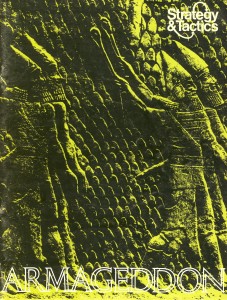 Armageddon in 1972. At that time, the broader hobby could be presented as going through its first period of evolution, with new designers, new companies, and a growing ambition to up the content of titles as well as widening the subject matter. Ancient games thus had the advantage of arriving when those involved in design had some shoulders to stand on – shoulders that had hunched over the drafts or the game-ready pieces of the likes of Waterloo, Anzio, 1914, Panzerblitz etc., and thus had some kind of path to follow to their own ends and purposes. Of course, that is not to say that pushing panzers around on the steppe could be compared that closely to sending out a charge of chariots, but at least those involved in the earliest ancient-themed games were not starting from absolute scratch, although the genre still had to settle in and find its way – and one might still argue it is still finding its way today, as is the rest of the hobby.
Armageddon in 1972. At that time, the broader hobby could be presented as going through its first period of evolution, with new designers, new companies, and a growing ambition to up the content of titles as well as widening the subject matter. Ancient games thus had the advantage of arriving when those involved in design had some shoulders to stand on – shoulders that had hunched over the drafts or the game-ready pieces of the likes of Waterloo, Anzio, 1914, Panzerblitz etc., and thus had some kind of path to follow to their own ends and purposes. Of course, that is not to say that pushing panzers around on the steppe could be compared that closely to sending out a charge of chariots, but at least those involved in the earliest ancient-themed games were not starting from absolute scratch, although the genre still had to settle in and find its way – and one might still argue it is still finding its way today, as is the rest of the hobby.
The hits and misses among ancient-themed games through the course of the 1970s tend to confirm that the modeling of ancient battle was a challenge demanding serious respect and some considerable trial and error to get right. Having said that, things were off to a fairly auspicious start with Alexander the Great. I must admit that I only know the game through its Avalon Hill editions, but I tend to suspect that what Gary Gygax originally put in was very much what I got when the Avalon Hill version first appeared in 1974.
If we refer back to the “where, with whom and with what” questions I posed at the beginning of this piece, it seems to me that Gary made a commendable attempt to present the two renowned ancient hosts at Gaugamela with period character and a real sense that this was not simply another rendering of combat factors on a different map location. Having said that, the map (the “where”) was a weakness which I suspect (could be wrong, of course), was at least part the result of hesitation to present 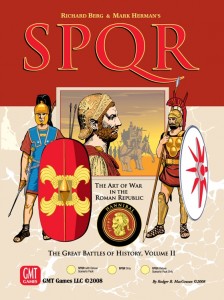 purchasers with a big empty space with a hex-grid on it. Today, the GBoH Gaugamela map flaunts its featureless vacuity as part of presenting the battle as it was, but more than forty years ago, we got a rather contrived “war crater” or arena, with hills on all sides, and camps dotted here and there around the edges. Extending flanks and end-runs to glory were not going to happen here because those forces, the cavalry of both sides, were already on the edge of the game world and had nowhere else to go but forward.
purchasers with a big empty space with a hex-grid on it. Today, the GBoH Gaugamela map flaunts its featureless vacuity as part of presenting the battle as it was, but more than forty years ago, we got a rather contrived “war crater” or arena, with hills on all sides, and camps dotted here and there around the edges. Extending flanks and end-runs to glory were not going to happen here because those forces, the cavalry of both sides, were already on the edge of the game world and had nowhere else to go but forward.
But where this game really did shine, for such an early effort, was in the modeling of the two armies – the “with what”. Play with all the advanced and optional rules, and any notion of different names and numbers on the same old thing (thinking here of the AH “classics”) went right out of the window. There were a multitude of different unit types in Alexander the Great, from the phalanx to chariots to horse archers, and each did something more than move at different rates and fight with different factors. Horse archers could loose their arrows and then shift away, chariots could charge…and get trounced, and the phalanx could rumble over most things put in its way. Best of all though, were the elephants, that you just knew, as their owning player, were going to get totally enraged and then inconveniently and disloyally trample all over your units.
Also helping to swing the party were the morale mechanisms, with a four level presentation of an army’s mood and combat results tailored to the present fighting élan of the force in question. But what of the “with whom”? Here I am referring mainly to the size of the hosts as well as the caliber of who (or what) was leading them. Gaugamela is somewhat different to many other ancient battles in that we can be pretty sure of the size of the Greek/Macedonian host, (we have an actual OOB) and at least where the contingents of the Persian army were drawn from. Just how many men were meant to be in the average Persian unit is not really stated, but it is not unreasonable to suspect that the designer did away with any notion that Darius had a million men with him, or a quarter of a million, or anything else with a “million” tagged in there somewhere. In short, the proportional relationship between the two armies looked about right, and that is something not to be scorned at given that this was such an early venture into the genre. As for the leaders, I made reference to them in my article “Take Me To Your Leaders”. Like much else, modeling leader abilities and presence was still in its infancy, and we would not see the game story as well as the pure mechanical effect of such leaders until we approach a later period in the history of the hobby. For now, Alexander, Darius and their respective subordinates occupied the safe world of combat bonuses for their sword’s presence, and morale drops for their death.
By contrast, Armageddon can come across as a bit of a disappointment, but we need to be cautious about that sort of summary. Here was a game with a seriously ambitious theme, looking at battles around the Eastern Mediterranean and Middle East from the dawn of recorded history to around about 600 BC. However, whilst the aim was admirable, in reality the design was chewing off far more than its limited parameters could reasonably deal with. To highlight this, while the game was accompanied by a serious amount of historical analysis in the accompanying Strategy and Tactics, not much of that goodness found its way into the gameplay – maybe, at least in part, because of the limitations of being a magazine game. On the other hand, this sort of thing has always tended to crop up in designs from time to time – as pointed out by Enrico Viglino in his video 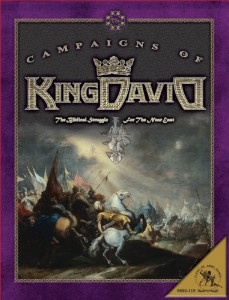 series on The Campaigns of King David, the game’s highly detailed and colourful historical notes were only somewhat sparsely represented in the game. And yet, as I hope I am making clear in this article, a society’s culture and values are integral to how it is going to fight its battles, and if the historical record, at the very least, has bequeathed you this kind of material, it really belongs somewhere in the design.
series on The Campaigns of King David, the game’s highly detailed and colourful historical notes were only somewhat sparsely represented in the game. And yet, as I hope I am making clear in this article, a society’s culture and values are integral to how it is going to fight its battles, and if the historical record, at the very least, has bequeathed you this kind of material, it really belongs somewhere in the design.
Armageddon’s represented nations read like a roll-call of the notable powers sitting on the periphery of recorded human life – Egyptians, Hittites, Sea Peoples, Assyrians, Babylonians etc. However, apart from various permutations of weapon types from the generic counter mix, those nations were not really there in any substantive form. The same applies to their leaders, even when we do know a name here or there and have some notion as to their character. With Ramses II as the most obvious example, there is no sense of colour, ego, genius or bravado in the representation, and this despite the Egyptian monarch having one eye on his legacy every time he opened his mouth or pointed at something.
Despite this, Armageddon is certainly not without its merits. Like Alexander the Great, the design stressed the importance of keeping your front to the enemy; and in a way that has carried through to our contemporary wargaming time, the design also presented a combat matrix by which weapon/troop types gained or lost effectiveness depending on who they were engaged with – a fundamental aspect of GBoH through its own long story.
By contrast, much of Alexander the Great’s involvement with this important aspect of ancient arms rested with various qualifying rules on units’ abilities (e.g. cavalry could not attack a phalanx front) or simply what combat factors a unit had printed on it. There is no doubt in my mind that the Armageddon matrix was a far more elegant approach, and the fact that it has persisted to this day is testament enough to the validity of the model.
It is therefore just that bit more of a shame that a sense of national character did not find its way into the design. Many of the battles in Armageddon fall readily into the “no precise location, no idea of numbers, no description of the course of events” description. Then again, we do have information, and quite a lot of it, as to the pattern of existence in these early nations, and all have left some idea as to how their warriors were accoutered – those ancient Egyptians had one seriously nasty blade, the Khopesh. And if you know these things, you can start making deductions as to who was compelled or called upon to fight, what they would have fought with, and what weapon type would have suggested by way of choice of formation, tactics, and staying power.
The leaders in Armageddon could indeed be described at first glance as nameless, generic nobodies. But there was a bit more to them than that, and in fact, within the context of their own game world, they did a greater diversity of jobs and were, at least in some basic sense, more culturally attuned, than the personalities in Alexander the Great.
Armageddon’s leaders were divided into two main groupings, civilian and military, and then each type was further divided into quality rankings. Civilian leaders, whom one might think to represent anyone from a tribal leader/administrator to some species of officialdom given a command responsibility, could help move units but not aid them in actual combat. Military leaders could do both, and this portrayal of type, however rudimentary, was a really nice touch.
In the mid-1970s Avalon Hill published two further ancient-themed games, both of which had had a former life under a different banner. In 1975 they produced Caesar’s Legions (derived, I believe, from a design called Eagles, which was released the previous year). This covered Rome’s tribulations along and across the Rhine and Danube from the time of Caesar to the death of Nero. The following year, they published their own take on an ambitious amateur design covering the momentous battle about the Gallic stronghold of Alesia. Thinking first of Caesar’s Legions, yes it is again wandering a little off theme as this was really an operational game, but it does touch appositely upon considerations of recreating the era, and it is important to point out that the basic system presented here had enough legs to carry into two further titles by other designers (Keith Poulter’s 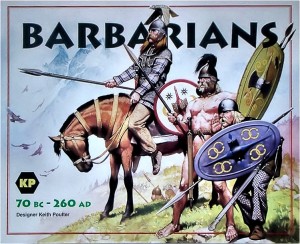 Barbarians and the rather commendable Caesar in Gaul by Craig Johnson). Caesar in Gaul added a level of politics to the model by charting Caesar’s relationship with the senate and populace back in Rome as he went on his fame-driven expeditions, whilst the Keith Poulter design took the system and used it to cover campaigns over several centuries and a considerable portion of Roman Europe.
Barbarians and the rather commendable Caesar in Gaul by Craig Johnson). Caesar in Gaul added a level of politics to the model by charting Caesar’s relationship with the senate and populace back in Rome as he went on his fame-driven expeditions, whilst the Keith Poulter design took the system and used it to cover campaigns over several centuries and a considerable portion of Roman Europe.
But although there is enjoyment to be had here, to a greater or lesser extent at least two of the designs, and possibly all three (I have never played 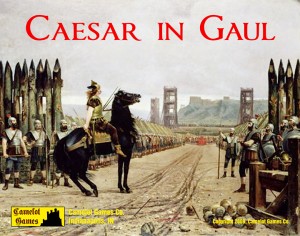 Caesar in Gaul so I cannot be sure) suffered from what might be described as an idée fixe – i.e. barbarian forces lacked the organization and overall cohesion to muster for sustained periods in one host, so whatever they had stayed dispersed over a number of hex locations for the course of the scenario in question. Certainly, as a general concept, this lack of cohesion and organization is valid, but you only have to look at Caesar’s big bust-ups in the region to see the other side of the story. Likewise, when Germanicus was campaigning across the Rhine to recover the eagles lost by Varus in the Teutoburger Wald, the Idistaviso battle (somewhere close to the Weser, and possibly in it) was clearly a bit more than a series of struggles built around what forces could cope with the stacking restrictions. Just a soupçon of a muster and battle mechanism could have made all the difference, and indeed, one might argue that if you are going to reflect the difficulty tribes have in putting a host together, you also need to present the impact of those moments when they achieve precisely that.
Caesar in Gaul so I cannot be sure) suffered from what might be described as an idée fixe – i.e. barbarian forces lacked the organization and overall cohesion to muster for sustained periods in one host, so whatever they had stayed dispersed over a number of hex locations for the course of the scenario in question. Certainly, as a general concept, this lack of cohesion and organization is valid, but you only have to look at Caesar’s big bust-ups in the region to see the other side of the story. Likewise, when Germanicus was campaigning across the Rhine to recover the eagles lost by Varus in the Teutoburger Wald, the Idistaviso battle (somewhere close to the Weser, and possibly in it) was clearly a bit more than a series of struggles built around what forces could cope with the stacking restrictions. Just a soupçon of a muster and battle mechanism could have made all the difference, and indeed, one might argue that if you are going to reflect the difficulty tribes have in putting a host together, you also need to present the impact of those moments when they achieve precisely that.
Caesar Alesia was Avalon Hill’s version of the game originally designed by Robert Bradley and first published in 1971 – making it another possible candidate for first ancients game, but nothing more than that until I hear otherwise! Unfortunately, apart from a few images of the game in its first state, the only reference I have as to its nature is, if I recall correctly, that units had a range of facing options/postures – something entirely expunged from the Avalon Hill version. What else, if anything, got changed I really have no idea. What I do know is that this has been among the most popular of all ancient-themed games for not a few players, though I would dare contend that this is far more due to its broad brush playability and the situation the game depicts rather than presenting some vast leap forward in the realization of antique hosts.
We should be too surprised at this slow sort of evolution: after all, from the first depiction of cavalry in a Napoleonic board wargame (Waterloo) to the first depiction where they actually did something other than move faster was a fair old whack of years – possibly some way into the 1970s before matters really shifted to another level. It was much the same story 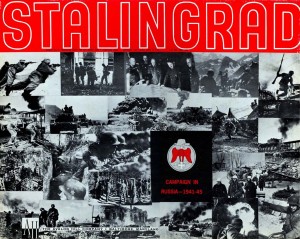 with panzers – from Stalingrad’s non-thrusting armoured tips to something like the true Blitzkrieg model was again a passage of many years and not a few other games where nothing particularly different or innovative was actually happening.
with panzers – from Stalingrad’s non-thrusting armoured tips to something like the true Blitzkrieg model was again a passage of many years and not a few other games where nothing particularly different or innovative was actually happening.
When I look at the Romans and Gauls of Avalon Hill’s Caesar Alesia, it is hard for me to see anything other than different coloured units with different numbers on them. The ten legions Caesar had present are there, but you can jumble them up any way you want without penalty. And yes, there are missile auxiliaries, cavalry, and forts, ramparts and belts of nasty sharp things in the ground, but that is still the situation without any real feeling as to who built these works, who commands whatever is relying on them, and who is desperate to lunge across and over them. Interestingly, the GBoH version of this battle is, in its main historical scenario, limited to action on that side of Caesar’s works the Gauls originally faced – the argument being that the relief host of Gauls lacked the time, organization and resources to do what they invariably do in the 1976 game…pop up all over the place. And as for that process of sidling around the Roman works, I sometimes wonder how certain opportunities for a bit of obvious rules colour ever get missed? As the rules stand, moving Gauls in any number to occupy another off-map perimeter area costs a game turn – why not make it possible, by die roll determination, that it costs two game turns or even three? The chances of muddle and discovery were rife, and ironically enough, the game did cater for a delayed response from the besieged force in Alesia, but not for a hapless mess ensuing as the Gauls try to shift tens of thousands of warriors around the broad circumference of the Roman lines.
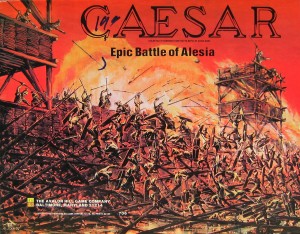 It is not that Caesar Alesia is a bad game – the situation is too entertaining for a start, irrespective of how many Gauls were on the outside looking in (Delbrück goes seriously out on a limb here with figures far short of the customary 250,000). But irrespective of issues of force size, the contending armies essentially fight as two or three lumps of numbers, with no real sense of morale, fatigue, functioning command presence or anything else that a gamer might enjoy working with or Caesar himself might delight in writing about. And it is probably fair to say that had this battle occurred in Egypt or Syria, I would not have been holding my breath in expectation of vastly different armies contending by dint of doing some appreciably different things.
It is not that Caesar Alesia is a bad game – the situation is too entertaining for a start, irrespective of how many Gauls were on the outside looking in (Delbrück goes seriously out on a limb here with figures far short of the customary 250,000). But irrespective of issues of force size, the contending armies essentially fight as two or three lumps of numbers, with no real sense of morale, fatigue, functioning command presence or anything else that a gamer might enjoy working with or Caesar himself might delight in writing about. And it is probably fair to say that had this battle occurred in Egypt or Syria, I would not have been holding my breath in expectation of vastly different armies contending by dint of doing some appreciably different things.
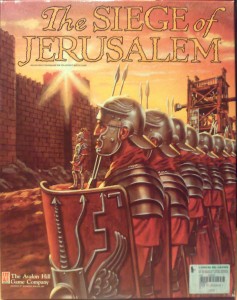 At about the same time as Avalon Hill’s Alesia was hitting the shelves, another siege game (and again semi amateur in production but certainly not in design ethos) was making its appearance – possibly first at 1976 Origins. Siege of Jerusalem, by Fred Schachter and David Weiss, would eventually find its way into a poshed-up second edition courtesy of…Avalon Hill. In fact, it is interesting to note that the not particularly abundant range of ancients titles produced in the 1970s had a distinct habit of starting off somewhere and ending up somewhere else. Another example is Trireme, which had a few homes after making its initial appearance in 1973 – Decalset, Battleline and then, yes, you’ve guessed it, Avalon Hill. At least for me, it is hard not to see these recurring elevations from at least relative obscurity as indicative of the difficulty in getting the era out of its niche and into the mainstream. Why that should have been when the era has had a far more significant presence in recent years (GBoH, Commands & Colors, Lost Battles, plus a clutch of “stand-alones”) is something for Part II of this study.
At about the same time as Avalon Hill’s Alesia was hitting the shelves, another siege game (and again semi amateur in production but certainly not in design ethos) was making its appearance – possibly first at 1976 Origins. Siege of Jerusalem, by Fred Schachter and David Weiss, would eventually find its way into a poshed-up second edition courtesy of…Avalon Hill. In fact, it is interesting to note that the not particularly abundant range of ancients titles produced in the 1970s had a distinct habit of starting off somewhere and ending up somewhere else. Another example is Trireme, which had a few homes after making its initial appearance in 1973 – Decalset, Battleline and then, yes, you’ve guessed it, Avalon Hill. At least for me, it is hard not to see these recurring elevations from at least relative obscurity as indicative of the difficulty in getting the era out of its niche and into the mainstream. Why that should have been when the era has had a far more significant presence in recent years (GBoH, Commands & Colors, Lost Battles, plus a clutch of “stand-alones”) is something for Part II of this study.
In the meantime Siege of Jerusalem is well worth paying some attention. Sadly, I have never seen the original except in a small number of BGG-posted photos, but I hope I have been in the hobby long enough to see past the basic components in order to appreciate the serious amount of dedicated effort that went into putting the design together. I suspect matters integral to the subject helped move things this way – we are talking about Jerusalem, one of the renowned sites of the ancient world, and a place of huge importance through the ensuing centuries right up to this day. Beyond that, this was a siege the designers were clearly keen to depict with attention to the methods of Roman siege craft as well has the material, and one might also say spiritual, resources available to the defenders. In short, with two vastly different hosts employing vastly different methods to effect combat, this theme was an open invitation to pull all the stops out. That in itself can cause issues, of course, as when you have such a range of finessing material to hand you can cause a game to collapse under its own weight – quite appropriate when thinking of a siege! As ever, the trick is in knowing when to stop, and at that point to have the right content in the box.
As for Siege of Jerusalem, unless anyone can offer another example (feel free), it might just qualify as the first ancients game where armies got to act the historical parts which properly belonged to them. You probably could have done Siege of Jerusalem something like Caesar Alesia, but such a technical and cultural theme clearly demanded a detailed approach. What the main differences were between the original version and the Avalon Hill edition coming a good number of years later, beyond the obvious presentation of components, I am not quite sure, although it seems there was work done regarding the “pulse” and administration of the siege as well as a broadening of some tactical options. But the original version remains important because of what it sought to do in marked contrast to much that had gone before.
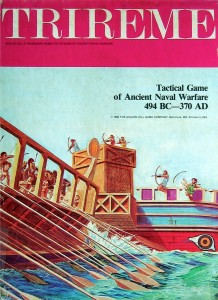 Trireme is also worth a mention, because again the technical aspects of the era and material being presented more or less necessitated something like a detailed approach. Cohorts, warbands, mobs of this and assemblages of that, they could be and often were simply defined as dead or alive, but with vessels full of trained rowers (none of Ben Hur’s “Go back to your oar forty-one!” here) and the wind and the water and the marines and the burning missiles and beak things all playing a part, just saying this or that ship was sunk or still floating would hardly seem enough. And yet, as I said a little earlier, you can have too much detail in a game, and it all largely comes down to matching content to scale to what you think players will want to engage with. And furthermore, we should not lose sight of the danger of putting the really technical stuff ahead of matters of doctrine, conduct, and a true impression of the event. There is certainly a point where these factors will meld together, but there is also a point where tech will overwhelm the colour. In that regard, a game like Trireme might give you a representative slice of a massive sea fight like Actium in a detailed longer scenario, but play it with several copies of the design to create the full battle with the full rules, and you are going to be in for some pretty long game sessions and needing a dedicated team for each side. If memory serves, there was a simpler fleet-style system included in the package, but as to its merits it is all too long ago for me to state anything with certainty.
Trireme is also worth a mention, because again the technical aspects of the era and material being presented more or less necessitated something like a detailed approach. Cohorts, warbands, mobs of this and assemblages of that, they could be and often were simply defined as dead or alive, but with vessels full of trained rowers (none of Ben Hur’s “Go back to your oar forty-one!” here) and the wind and the water and the marines and the burning missiles and beak things all playing a part, just saying this or that ship was sunk or still floating would hardly seem enough. And yet, as I said a little earlier, you can have too much detail in a game, and it all largely comes down to matching content to scale to what you think players will want to engage with. And furthermore, we should not lose sight of the danger of putting the really technical stuff ahead of matters of doctrine, conduct, and a true impression of the event. There is certainly a point where these factors will meld together, but there is also a point where tech will overwhelm the colour. In that regard, a game like Trireme might give you a representative slice of a massive sea fight like Actium in a detailed longer scenario, but play it with several copies of the design to create the full battle with the full rules, and you are going to be in for some pretty long game sessions and needing a dedicated team for each side. If memory serves, there was a simpler fleet-style system included in the package, but as to its merits it is all too long ago for me to state anything with certainty.
At this point, we more or less complete the first decade of ancient-themed battle wargames as part of the board wargame family. And what have we got after ten years of waiting and wanting? Well, not a great deal, either in quantity of titles or in a range of tried and tested mechanisms pertinent to the subject matter. There were some bright lights, but overall I have the impression of a genre in search of an approach, a method, to set a standard and really get things moving. Map, manpower, mechanisms, it always boils down to these things, and the ancient era can be a brute in these regards.
In Part II I will be looking how a later period in the hobby got to grips with recreating the battles of antiquity, but for the moment, we have not finished with those early designs. So let us first go back to the “where” for these games, and see what sort of methods and approaches they came up with.
First, the maps:
Gaugamela, as we do know, was fought on a large and essentially featureless plain. Notions that Darius had special chariot lanes prepared for his scythed terrors did make their way into the first incarnation of GBoH’s Alexander title, and then were done away with in the later revision – probably quite justifiably, given that pebble picking and clearance is a bit hard to envisage in a world beyond the fanciful accounts of the imaginative authors of yesteryear. On the other hand, the fact that this was a battlefield with no salient features save that it had no salient features seems to have thrown out the map design of Guidon and Avalon Hill, who possibly felt, as I said earlier, that they just had to give the punters their money’s worth by putting something on the map, even if it was running contrary to the actual history. The battle plain of Gaugamela has never been precisely located, and given the present state of things in that part of the world, it is hard to picture any archeological teams being able to access the area for some considerable time. It was much the same story when the British historian and documentary maker, Michael Wood, flew over the likeliest candidate region about twenty years ago. He could not land then, and he still could not land now – to be blunt, you need the Romans to sort out that sort of unhappy mess. Still, the very fact that there is nothing to put on the map save the units rather obviates the need to embellish this real estate with geography, and for that a designer should be pleased that there is one less job to worry about.
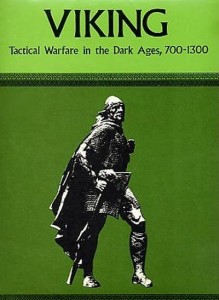 Armageddon used an approach to map design that would hold sway within a range of SPI titles during the early years of that company’s output. Games in the Prestags series, like Yeoman or Viking, or even Soldiers, dealing with the early days of combat in the Great War, all used a map with the various corners and territories thereof styled to represent this or that battlefield of history. This tended to make for pretty small battles in terms of counter presence, although some of the Soldiers scenarios were, by contrast, rather big. Just out of interest, the Yeoman map put its Agincourt location somewhere in the middle of the sheet, and it was not hard to spot, with its giveaway stretches of woodland to either side of a small stretch of hexes. Armageddon, like the others, used letter locations (just a letter printed in a hex) to designate what part of the map represented the territory of which battle, but unlike Agincourt, no one this side of Hammurabi’s laws has got the slightest idea what was really on all these fields of so long ago. One can, at times, follow the odd clue of archeological evidence towards some better grasp of things, such as at Kadesh, but that is about it. Then again, as we will see in Part II, there are ways of faithfully presenting the type of terrain upon this or that field of battle without fretting oneself to bits trying to work out precise locations or exact features.
Armageddon used an approach to map design that would hold sway within a range of SPI titles during the early years of that company’s output. Games in the Prestags series, like Yeoman or Viking, or even Soldiers, dealing with the early days of combat in the Great War, all used a map with the various corners and territories thereof styled to represent this or that battlefield of history. This tended to make for pretty small battles in terms of counter presence, although some of the Soldiers scenarios were, by contrast, rather big. Just out of interest, the Yeoman map put its Agincourt location somewhere in the middle of the sheet, and it was not hard to spot, with its giveaway stretches of woodland to either side of a small stretch of hexes. Armageddon, like the others, used letter locations (just a letter printed in a hex) to designate what part of the map represented the territory of which battle, but unlike Agincourt, no one this side of Hammurabi’s laws has got the slightest idea what was really on all these fields of so long ago. One can, at times, follow the odd clue of archeological evidence towards some better grasp of things, such as at Kadesh, but that is about it. Then again, as we will see in Part II, there are ways of faithfully presenting the type of terrain upon this or that field of battle without fretting oneself to bits trying to work out precise locations or exact features.
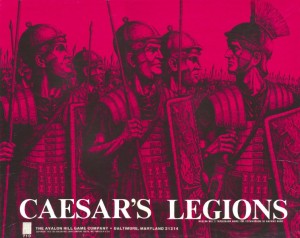 Caesar’s Legions and its offspring might be thought to be on surer ground – literally. Everyone knows where Germany more or less was, or is, or sometimes wants to be, and we all know where Gaul was, still is, as well as what rivers go where. But the vast stretches of forest on that map must surely be considered more representative of a general description rather than a precise definition of location, and the same certainly applies to the tribal borders, which were bound to have been on the uncertain side, if only because the inevitable land-grabs by one “nation” against another. In the game, the most significant aspect of these massive swathes of forest was in breaking down the Roman organization (represented in losing their better stacking ability) and combat advantages whilst conferring on German stacks containing light infantry an extra positive die roll modifier in battle.
Caesar’s Legions and its offspring might be thought to be on surer ground – literally. Everyone knows where Germany more or less was, or is, or sometimes wants to be, and we all know where Gaul was, still is, as well as what rivers go where. But the vast stretches of forest on that map must surely be considered more representative of a general description rather than a precise definition of location, and the same certainly applies to the tribal borders, which were bound to have been on the uncertain side, if only because the inevitable land-grabs by one “nation” against another. In the game, the most significant aspect of these massive swathes of forest was in breaking down the Roman organization (represented in losing their better stacking ability) and combat advantages whilst conferring on German stacks containing light infantry an extra positive die roll modifier in battle.
Caesar Alesia presented what is easily the most interesting and dramatic battlefield of the lot – two lines of substantial Roman works, forts and bastions, a dry ditch, the stronghold of Alesia itself…and some streams and hills. Between the best-known versions of this battle, there is no real difference as to the cartographic features – ramparts, camps, town…and possibly being on the wrong battlefield… In the case of this particular battle, this might not matter too much, as it is hard to imagine the Roman positions being vastly different in any other place than where the mainstream of history decided to deposit them. Actually according to a report on the BBC’s news website from 2012, the mainstream of history was really Napoleon III, who harnessed his ambition to the story of Vercingetorix, and in what seemed to be a series of startling archeological “finds,” the site of this early French fight for freedom was then conveniently located close to a town with the right-sounding name. But as far back as 2005 one of our fellow wargamers, Frédéric Bey, was entertaining what was described as the “Jurassian Hypothesis” by producing an “Alesia” game suited to a different battle site and a possible different “pulse” to events. Of particular interest is the introduction to the game, right there on BGG – referring to the matter of exploring an alternative site, this ended: “The game of history is a discipline which seems to have been invented for this, does it not?” Indeed so, and some while ago, writing of issues now manifest in the site of the Battle of Hastings, I expressed the same opinion – that wargaming did have much to offer in piecing together clues by creating models in which various historical hypothesis can be taken for a run and see what works and what falls to pieces.
In reality, the precise site of the famous siege and battle of “Alesia” is not so important to its simulation as the feasible operation of what actually ends up on the map. By contrast, if the alternative Hastings site is ever officially adopted – at Crowhurst, which in 1066 would have been a bottleneck of land blocking William’s progress from his true landing site – any future Hastings game is going to look very different to what we have seen thus far: start thinking of a tight field, with marshland and/or a very steep descent to either side, and the Saxons holding fast behind ditches 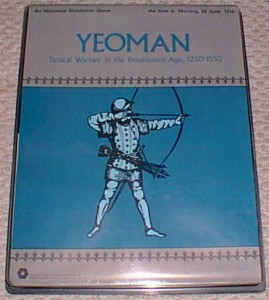 and palisades. In other words, Senlac Hill, which has already looked very iffy through various contemporary studies, would finally have to admit its true character – a place where you would have problems stopping Alistair Sim and Margaret Rutherford coming at you, let alone a mass of armoured knights.
and palisades. In other words, Senlac Hill, which has already looked very iffy through various contemporary studies, would finally have to admit its true character – a place where you would have problems stopping Alistair Sim and Margaret Rutherford coming at you, let alone a mass of armoured knights.
The issue of lost battlefields affects many an engagement once we are out of what we can broadly call the modern era of firearms and maps and a reasonable level of popular literacy. And even in that era, things can be misplaced or in some other ways become uncertain given exceptional circumstances – such as Custer getting everyone killed who might have otherwise been able to say: “we were over there!” As a rule though, the further back you go, the more likely you will be only to be able to read about a battle than be able to look at its battlefield. Mons Grampius and Watling Street fall into that category in my own country, though we can be pretty certain where Caesar first landed in England by dint of the utterly impassable white cliffs either side of the long shingle beach at Deal.
The Siege of Jerusalem rather bucks the trend, as we all know where Jerusalem is and was, and the time capsule character of much of the older city means that we know where many of the ancient glories and bastions were situated. Irrespective of the quality of the graphics between the different editions, we can accept that game map of Jerusalem as faithful to the antique reality. But error and miscalculation, false assumption and  received opinion, can play their own part in mucking maps up. Alexander the Great’s map went awry, and even if we can accept that reasonable method has gone into any given map design, that does not mean that some other method may be equally as good, or even better. This, in Part II, will have us comparing the different approaches to battlefield design used in GBoH and Professor Philip Sabin’s Lost Battles.
received opinion, can play their own part in mucking maps up. Alexander the Great’s map went awry, and even if we can accept that reasonable method has gone into any given map design, that does not mean that some other method may be equally as good, or even better. This, in Part II, will have us comparing the different approaches to battlefield design used in GBoH and Professor Philip Sabin’s Lost Battles.
But for now, let us complete Part I by looking a little more at the composition of game armies and how their arms are turned to war. I have already spoken of misfires among some of those earliest ancients games, and it is probably time to elaborate on what I mean in their context.
Alexander the Great certainly made it clear that the Persian host, for all its units, was only going to win at Gaugamela by an effective use of its only really effective force – its cavalry. Much of the rest of the Persian army was a pile of reluctant and ineffective tat, and the game makes that clear by the combat factors it bestows and several rules as to what happens when X attacks Y. In the design notes, it was admitted, if memory serves, that the fighting process in the game was rather bloodier than would have been the case in reality, but in mitigation, it was protested that the overall effect was about right. In further defence of the game, at least in my own opinion, it is probably better to perceive all those units in the process of being reduced and wiped off the map as being representative more of losing heart and fleeing rather than being hacked wholesale into bloody lumps. Nevertheless, alongside its dubious map features, one would have to say that the pacing of combat and its consequences in Alexander the Great was indeed suspect, given that it did suggest swift and widespread annihilation as a matter of course, and this outside of the sort of encirclement conditions where one might normally expect such slaughter to take place.
Armageddon, looking back at it, seems akin to a pretty decent story one gets halfway through and then realizes that the last chapters are missing. It would, however, certainly fit in with Delbrück’s arguments that most ancient battles were a lot smaller than the chroniclers of bygone ages liked to present them as being, as the number of units on the map for the scenarios presented are, as I said, pretty sparse. And we should also recall that the matrix modifying combat effectiveness by comparison of weapon and troop type was such an important step. But it really does take a big leap of imagination to see this game’s totally generic units as truly representative of the nations they are meant to portray. There is no real sense of élan, morale, a social or military concept, of events, even portents if you like, shaping the course of battle. And the sad thing is, there was no earthly reason forty-five years ago why we could not have seen something along those lines.
Caesar’s Legions, for me, was another misfire. The first two of its five programmed instruction scenarios were essentially bland bust-ups between dubious clumps of units, and while there was certainly a fair amount of situational colour in the Teutoburger and Batavian scenarios, the combat system did not feel like much of anything. To illustrate this, I want to refer to an article in a copy of The General from many years ago that took a look at the combat units of the game. When it came to the elite German infantry, the 12 (combat) 3 (movement) heavies, the author described them as “The Pride of Wotan.” Fair enough, for one does get the feeling that these warriors would have physically dwarfed many a Roman soldier. But all these elite Germans had by way of characteristics was an extra combat factor over the other veterans, who were rated 11-3. Other than that, the game used one of my pet wargame dislikes, the deck of tactical cards – wargaming’s equivalent of Gollum and Bilbo’s riddle contest: “What has it got for its tacticses?” I did not like these cards forty years ago, and I do not like them now. But, had there been provision for the German player to play a card like Frontal Assault, and having some of Wotan’s bouncers present and leading the way, gain a beneficial combat modifier, I would have seen some merit in what I was doing.
Barbarian armies are, of course, difficult to quantify at the best of times. I doubt if the Roman census ever got round to having a walk in the Teutoburger Wald, though certainly those Germans would have been having an occasional stalk in the Black Forest. Probably the best contemporary reference we have for anything across the Rhine is Germania by Tacitus. Fortunately, we know what legions operated along the Rhine, because the Romans kept records, and besides those, the likes of Caesar kept writing about/boasting about/exaggerating about the passage of his arms and who and how much of whom was standing in the way. By contrast, those proto-Germans kept very little for any period of time, including prisoners. Having said that, I never felt that games like this were off beam with how they presented the enemies of Rome in terms of numbers, tribe-to-tribe, nation-to-nation. I just did not like a number of the processes by which they were meant to live and breathe on the actual map.
Again, when it comes to the Siege of Jerusalem, we have records, and this first and foremost from Josephus, whose account of the Jewish revolt against Rome is one of the treasures of ancient literature. And the fact that this account was written by a former leader among the Jewish rebels, who then switched sides, and was subsequently a negotiator, having come to know the leading figures from both parties, rather illustrates the complex but fascinating texture to the events the game is built around. Of course, you could hardly fit all this in – but some of it, where really relevant, is in the game, sometimes subtly and sometimes a tad more overt. For example, the Romans have not got forever and a day to complete the capture of the city. In reality, Titus, the overall Roman commander and son of the new emperor, Vespasian, had some considerable political and family pressure bearing down on him to get back to Rome. In the immediate aftermath of what would be known as “The Year of the Four Emperors” Rome was rife with rumour of possible further treachery and conspiracy. In the space of just a few months, Nero had topped himself, Galba had been done in for being a complete misery guts, Otho had ended his own life because he thought everyone was trying to end it for him, and the massive bulk of Vitellius had proved no match for the massive army of Vespasian – the emperor who cultivated a persona of being a genial old duffer at the same time as building the Colosseum… where nothing particularly genial ever really happened. In the case of Titus, it seems that suspicion was growing that he was intending to use his army for nefarious purposes against his father, and therefore it was no surprise that with the siege concluded, he hurried his innocent and dutiful self back to Rome, whilst trying to look as unconcerned and happy-go-lucky as if he had just been off east buying carpets.
On the Jewish side of things, it can appear that the only thing binding the revolt’s leaders together was their mutual and massive dislike of Rome – other than that, forget about it. As for their game commands, the design’s mechanisms presented the Jewish defenders of the city in forms ranging from combat adept zealots through to the sort of stuff that can at least stand on a wall and chuck things over it. One other thing that should be apparent, and this is probably the most important aspect to approaching the game, is that it should benefit the player to learn some history of the actual events first, and in particular, how the Romans went about a siege operation. The Roman army assaulting the city is a complex force capable of doing complex things – so while it is all very well admiring your ramp building, your trundling towers, and your testudos, you better learn at least the rudiments of how it all works or you may well end up in a mess.
To repeat, of all the games looked at thus far, this is the one I would claim runs closest to an appropriate historical feel across a range of activities. But it is a physically big game, and being specific to a particular situation, you probably could not transfer many of its mechanisms to other battle games, though the ethos of capturing the character and challenge of a situation, the nature of the armies and the resources available to them, certainly could be applied.
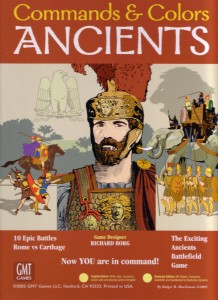 And at that point I end this first part of looking at the recreation of battles from ancient times. Given just how many ways different themes have been successfully rendered over the years, it may seem a bit unfair to say that nothing had really settled in the world of ancients gaming by around 1980 – from a range of perspectives, things all across board wargaming always tend to be a flux and evolution in any one of a number of ways. But I think readers will know what I mean – I am speaking of finding a way, or more than one way, of telling the story and presenting the challenge of ancient conflict on the battlefield. For Part II I will “leap” forward around about ten years, passing, with respect, whatever ancient offerings the 1980s had to offer, and this in order to enlarge the sense of contrast between one age of design and another. Part II will, of course, look at that phenomenon which is The Great Battles of History; but at the same time, I do want to devote time to the other ancients designs hailing from the contemporary period – Rome at War, Lost Battles, and Commands and Colors. It should be interesting.
And at that point I end this first part of looking at the recreation of battles from ancient times. Given just how many ways different themes have been successfully rendered over the years, it may seem a bit unfair to say that nothing had really settled in the world of ancients gaming by around 1980 – from a range of perspectives, things all across board wargaming always tend to be a flux and evolution in any one of a number of ways. But I think readers will know what I mean – I am speaking of finding a way, or more than one way, of telling the story and presenting the challenge of ancient conflict on the battlefield. For Part II I will “leap” forward around about ten years, passing, with respect, whatever ancient offerings the 1980s had to offer, and this in order to enlarge the sense of contrast between one age of design and another. Part II will, of course, look at that phenomenon which is The Great Battles of History; but at the same time, I do want to devote time to the other ancients designs hailing from the contemporary period – Rome at War, Lost Battles, and Commands and Colors. It should be interesting.
Paul Comben


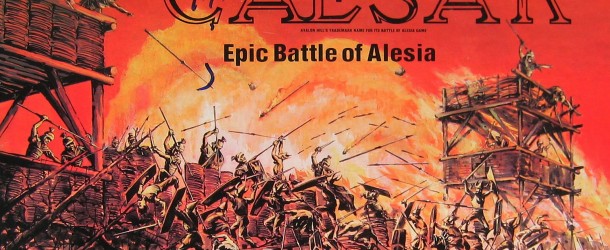
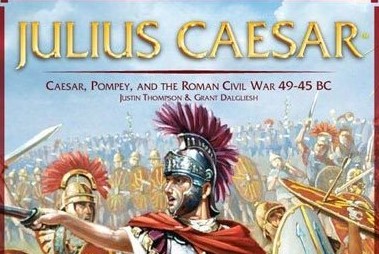
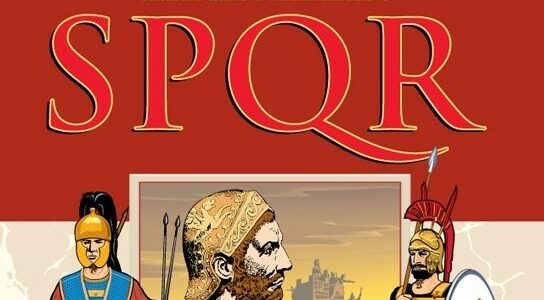
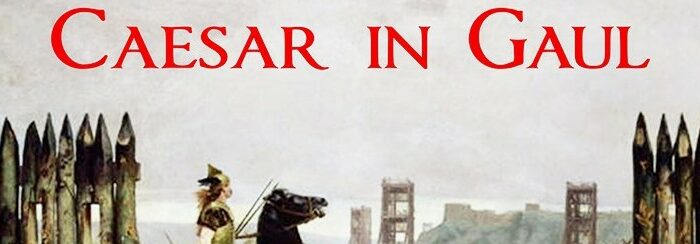
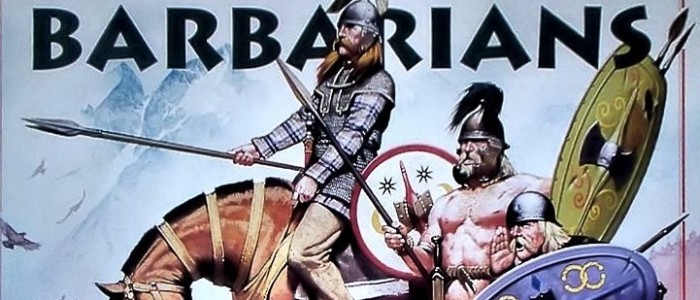

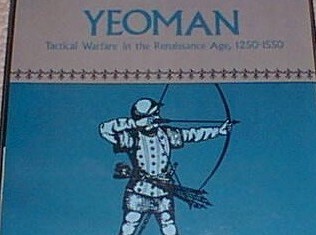
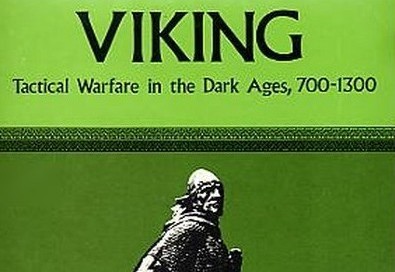
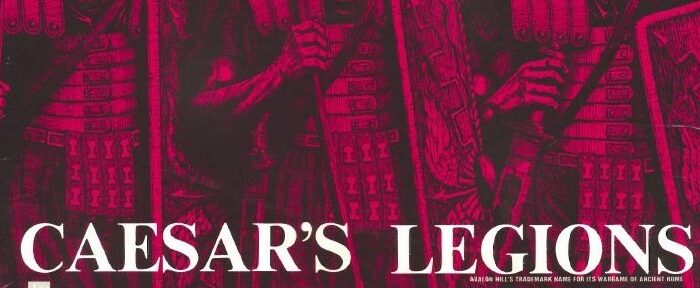

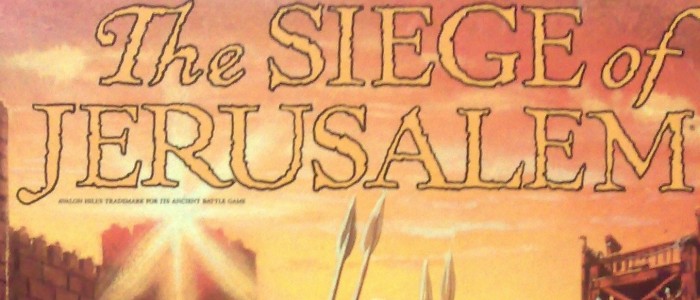

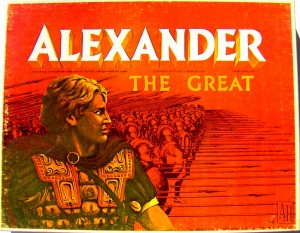






Fantastic article. Thank you. Eagerly awaiting part II!
You’re most welcome. Part 2 will be along in a few weeks.
Well written and interesting article, I look forward to part 2.
I’m giving serious thought to Part 2 at this moment. The format and mechanisms of latter/contemporary games on ancient battle themes makes a bold contrast with what went before. In other words, I’m pretty confident I can produce a good read!
What about the game “Centurion”? It was published in S&T before Armageddon.
I gave a lot of thought as to what games to include – inevitably some ended up on the wrong side of the line. My intention was never to list everything, or precisely catalogue what went before what, Instead, I was looking for games that would offer valid perspectives on how various design approaches fared during the early days of recreating ancient battles within the hobby. I think using Armageddon does that pretty well in its own way, and it is certainly an early offering and a valid subject for this piece. The Prestags series was also certainly in my mind, but inevitably one has to watch an article like this getting too long for comfort. Besides, a lot of Prestags is way outside the era – even Legion wanders hundreds of years beyond my cutoff point. As for Centurion, I have never seen it up close, let alone played it. I therefore felt I could not possibly bring it in here. By contrast, I did find and buy a copy of Armageddon specifically for this article. .
I think the characterization of AH Alesia is a bit harsh. I prefer not to think of it as a simplified game but rather one where the designer decide what to focus on and what NOT to focus on. The tactical donut aspect of Alesia is what it is all about. The strengths and weaknesses of the two sides’ units is historic. There may not be a better game from an excitement standpoint than Alesia. SOJ is truly the outstanding ancients game though. Love them both (and played the originals as well as AH with both!)
I would be fibbing horribly if I said I had not repeatedly played and thoroughly enjoyed Caesar Alesia in years gone by. I do wish I had had a chance to see the original version though, and indeed, as I write these articles, I find myself wishing that online board wargaming resources did include being able to readily access the rules of many an older game. It would mean I and others would be able to add more content by dint having a greater pool of material to work through.
On other matters I think the two games you include are pretty near the level of complexity they should be at – I doubt if many could play and enjoy the Alesia situation with SoJ’s level of detail, or would enjoy SoJ in any streamlined form.That is a seriously technical subject which rather demanded the treatment it received from its designers.
My “issues” with Caesar Alesia today largely stem from it lacking just a bit more colour and content (not meaning more complexity or difficult bits) just to shape the armies that level or two more. As it is, and I know this is putting it somewhat crudely, you could take the essential mechanisms of the game, turn the “gardens of death” and ramparts into minefields and pillboxes, switch the Gauls for Germans and the Romans for Soviets, and call the ensuing product Breakout from Stalingrad or something like. It might be entertaining, but it would no more portray the nature of the armies in 1942 than the same system would for forces two thousand years earlier.
Having said all that, I will be referring to Caesar Alesia again in an article for Harvey Mossman’s The Boardgaming Life – due out pretty soon. Do please drop by.
Oh, and I got Caesar Alesia for Christmas 1976 (I was all hair and flares) along with Napoleon’s Last Battles, Napoleon at War and Terrible Swift Sword (I’d passed my big public exams at school a little earlier, and mum and dad sort of pushed the boat out!)
Any ETA on part 2? Loved part I
Part II is coming along, but being very detailed, it is taking time. Just to give you an idea, the section on GBoH runs to about 10 pages of Word document in itself. I have three other design models to cover, and I’ve also been researching around the British Museum website as well.
Please accept my apologies for the delay, but it will be about two to three more weeks. I just want this to be the best it can.